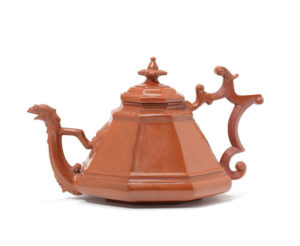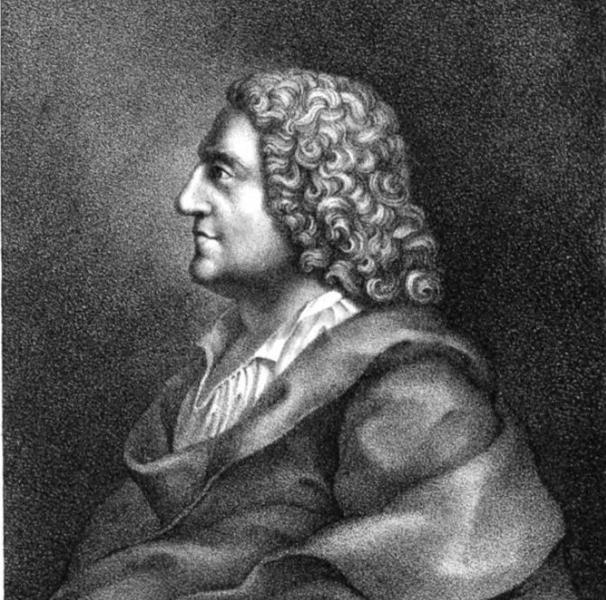
Johann Frederick Böttger, was born on February 4th, 682, n the city of Schleiz, Southern Gremany. His parents had been brought up in Magdeburg and been involved in one way or other with the art of the mint, and his paternal grandfather had been a master goldsmiith. Being already learned in the subjects of geometry, mathematics, and Latin, by the time he was 10 years of age, it appeared the art of chemistry was what captivated his interest. By the time he was 14 years old he was accepted at the leading apothacary of the time, Frederich Zorn in Berlin. If it was not for his infamous meeting with Johann Knuckel, an elderly chemist, who convinced Böttger, that if he continued his learning, by way of his advices, he had every chance of, learning the art of the Arcanum, of, turning base metals in gold. Further fuelled by a meeting with the rather mysterious Greek monk, Laskaris, who Böttger, confided in, he too, knew the the secret of the arcaum further convinced Boettger that he could be very close to making the discovery of a life time that would be guaranteed to secure his future, that, of the Philosopher’s stone. Böttger became so incensed with the idea that other might talk him out of the idea that he, would listen to no one, least of all Freiderick Zorn who told him that chemists over the centuries had been looking unsuccessfully for the secret of the Arcanum.
By the year 1701 Böttger was now 19 years old. Within a few years, whilst excaping the clutches of the Prussians, had he listened to his teacher Zorn, he would never have created a rather miserable and short lived life in captivity, trying to prove his worthyness to his King August the Strong, Elector of Saxony, that he possessed the knowledge to turn stone into gold. But there again had he listened, Meissen porcelain, may never have been born.
During his early twenties, as an alchemist, Böttger with the collaboration of Ehrenfried Walther von Tschirnhaus discovered the secret of making hard paste porcelain. Although Böttger first experimented with the porcelain by 1706, production did not begin until 1709, The first of the ware were a hard reddish stoneware known as “Böttger Stoneware”. By 1713 he produced the fine white porcelain Böttger porcelain teapot circa 1720 (image 155) that enabled the Meissen manufactory to be established. He was appointed director of the Company.
Fine Red Böttger Stoneware Teapot circa 1710
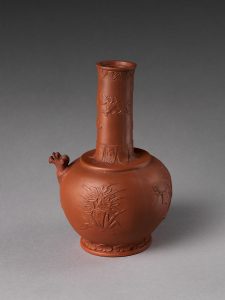
Fine Red Böttger Stoneware Kendi after a Japanese Original circa 1710-14
Initially discovered how to make a red stoneware and then onto creating first white hard paste porcelain at Meissen as can be seen in the image below.
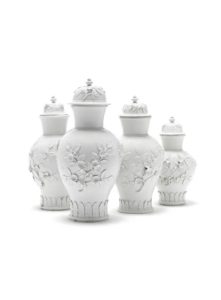
AN EXTREMELY RARE GRADUATED SET OF FOUR MEISSEN BÖTTGER PORCELAIN VASES AND FOUR COVERS, CIRCA 1715
Modelled by Johann Jacob Irminger, of baluster shape, in three sizes.
While early Böttger porcelain was painted in white, experiments began adding colour although coloured items were not really established until 1719. The following example; a teapot is amongst the earliest of Böttger’s coloured wares. The image below see’s colour added to the white. Here is another example of Meissen using an outside decorator; George Funcke of Dresden.
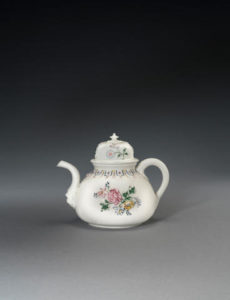
AN EARLY MEISSEN TEAPOT AND COVER, CIRCA 1715-20
Decorated in the workshop of George Funcke, Dresden
Some early essays in figure modelling of c. 1710-12 illustrate early commedia dell’arte figures modelled by Balthasar Permoser, Benjamin Thomae or Paul Heermann, also slightly later, a chess piece by Johann Joachim Kretzschmar, illustrating Augustus the Strong, the owner of the Meissen factory, majestically portrayed in Roman dress. These grand Baroque pieces found in the polished red stoneware further evolved into the white porcelain that were created by the most famous modeller of all time Johann Joachim Kandler (1706-75). The earliest of Böttger’s figures were copied from the simple seated oriental figures (budha). pagoda’ figures.
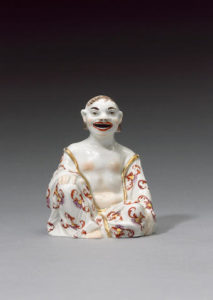
Bottger porcelain Magot inspired after Chinese Dehua Wares in the 17th century circa 1725
During the first twenty years at Meissen there was a shortage of painters and gilders. The Seuter family were major silversmiths in Augsburg. Meissen made use of Seuter and other prominent silver and goldsmiths to decorate porcelain. Examples can be seen in this tea bowl and saucer.
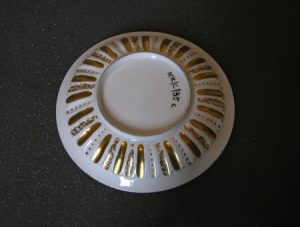
Saucer. Böttger porcelain. Meissen, c.1720. Decorated with moulded fluting and gilded later at Augsburg by Seuter family, c.1730. Figures painted in centre with gilt chinoiserie ‘Laub und Bandelwerk’. Gilt rim.
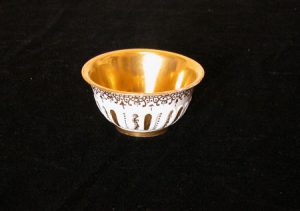
Tea bowl. Boettger porcelain. Meissen, c.1720. Decorated with moulded fluting and gilded later at Augsburg by Seuter family, c.1730. Figures painted in centre with gilt chinoiserie ‘Laub und Bandelwerk’. Gilt ground inside.
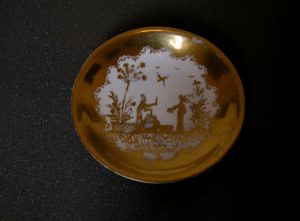
Saucer.BöttgerBöttger porcelain. Meissen, c.1720. Decorated with moulded fluting and gilded later at Augsburg by Seuter family, c.1730. Figures painted in centre with gilt chinoiserie ‘Laub und Bandelwerk’. Gilt rim.
As well as Red Stoneware articles by Böttger were also lacquered as can be seen in the following extremely rare vase.
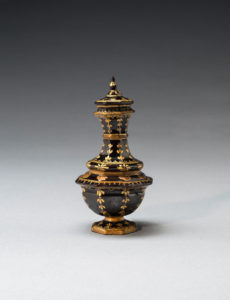
Böttger Lacquered Vase circa 1710-19
The following figure of Augustus the Strong; benefactor of the Meissen factory is amongst the earliest of Meissen painted figures; Circa 1715 Modelled by Johann Joachim Kretzschmar (1677-1740), probably decorated in the workshop of George Funcke, standing on a square base, the base, cuirass, his laurel wreath and facial features all picked out in gold, 10.5cm high.
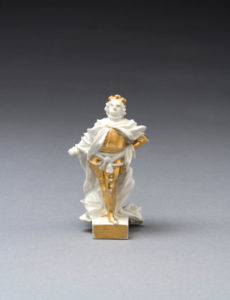
AN IMPORTANT EARLY MEISSEN FIGURE OF AUGUSTUS THE STRONG AS IMPERATOR, CIRCA 1715
Modelled by Johann Joachim Kretzschmar (1677-1740), probably decorated in the workshop of George Funcke, standing on a square base, the base, cuirass, his laurel wreath and facial features all picked out in gold, 10.5cm high.
A VERY RARE MEISSEN WASTE BOWL, CIRCA 1723 Probably painted by J.G. Höroldt,
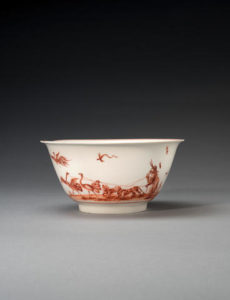
A VERY RARE MEISSEN WASTE BOWL, CIRCA 1723 A VERY RARE MEISSEN WASTE BOWL, CIRCA 1723
Probably painted by J.G. Höroldt,
Although Böttger died in 1719 his porcelain was used into the early 1730’s. Horoldt’s painting on porcelain are amongst Böttger porcelain finest. As well as Outside decorators much of the porcelain painted in Höroldt’s workshop at Meissen is Böttger porcelain:
A VERY RARE MEISSEN WASTE BOWL, CIRCA 1723Probably painted by J.G. Höroldt,
Probably painted by J.G. Höroldt,
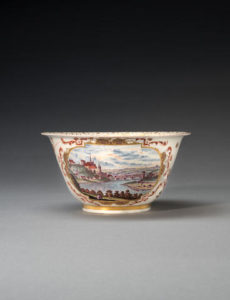
A VERY RARE MEISSEN WASTE BOWL, CIRCA 1723
HOUSING THE MEISSEN MANUFACTORY, CIRCA 1726
Painted on the front with a view of the town of Meissen and the Albrechtsburg, the reverse with a view of the Elbe river, each within a gilt quatrelobe cartouche embellished with Böttger lustre and iron-red scrollwork, the sides with indianische Blumen, the interior with a similar cartouche painted in the manner of J.E. Stadler with a chinoiserie scene.
AN IMPORTANT MEISSEN SILVER-GILT-MOUNTED TANKARD WITH SAXON CROSSED SWORDS AND AR MONOGRAM IN GILT CAROUCHES, CIRCA 1725-30
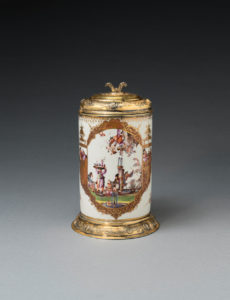
AN IMPORTANT MEISSEN SILVER-GILT-MOUNTED TANKARD WITH SAXON CROSSED SWORDS AND AR MONOGRAM IN GILT CAROUCHES.
CIRCA 1725-30


